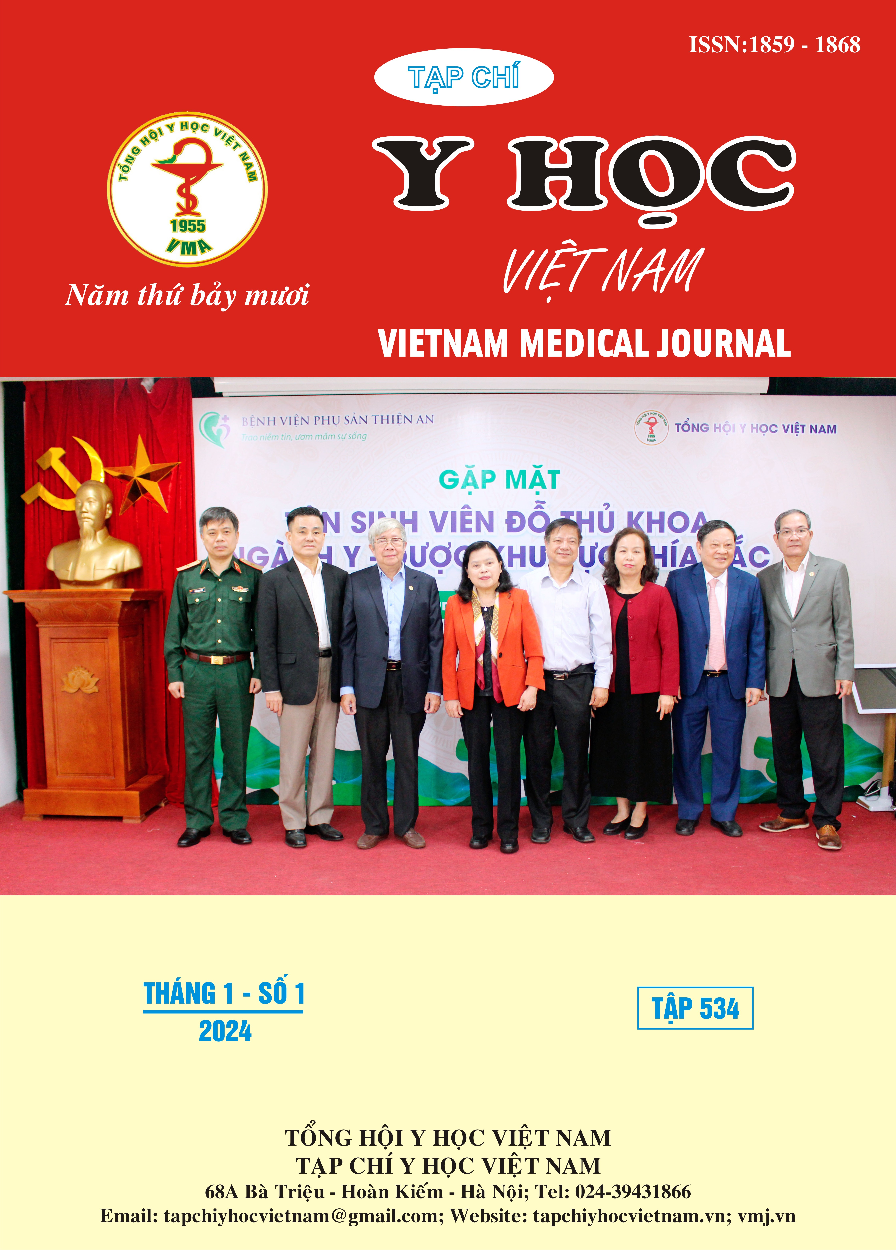TECHNICAL ASPECT OF MAGNETIC RESONANCE THORACIC DUCTOGRAPHY IN PATIENTS WITH CHYLOUS LEAKAGE POST THYROIDECTOMY
Main Article Content
Abstract
The objective was to assess the safety of MR thoracic ductography with inguinal lymph node injection of contrast material in patients diagnosed with chylous leakage post thyroidectomy. Materials and methods: This retrospective descriptive study included patients who MR thoracic ductography with contrast material injection into both inguinal lymph nodes. Results: Between 2019 and 2023, a total of 38 patients underwent MR thoracic ductography with inguinal lymph node contrast material injection. The average time per one MRI examination was 22 minutes (range: 15-40 minutes). The average time for the contrast material to reach the thoracic duct was 8 minutes from the start of injection. The most common complication was pain at the injection site, experienced by 19 patients (50%) immediately after injection. Swelling due to contrast material extravasation from the lymph node occurred in 2 patients (5.3%). There were no severe complications requiring treatment intervention. Conclusion: MR thoracic ductography with inguinal lymph node contrast material injection is a minimally invasive and safe diagnostic method with no complications requiring treatment.
Article Details
References
2. H. Hematti and R. J. Mehran, ‘Anatomy of the thoracic duct’, Thorac. Surg. Clin., vol. 21, no. 2, pp. 229–238, ix, May 2011, doi: 10.1016/ j.thorsurg.2011.01.002.
3. I. Lee, H. K. Kim, J. Lee, and E. Y. S. and J. Kim, ‘Thoracic Duct Embolization for Chyle Leakage after Thyroid Surgery’, Korean Thyroid Assoc., vol. 13, no. 1, pp. 47–50, May 2020, doi: 10.11106/ijt.2020.13.1.47.
4. S. W. Delaney, H. Shi, A. Shokrani, and U. K. Sinha, ‘Management of Chyle Leak after Head and Neck Surgery: Review of Current Treatment Strategies’, International Journal of Otolaryngology. Accessed: Feb. 10, 2021. [Online]. Available: https://www.hindawi.com/ journals/ijoto/2017/8362874/
5. F. G. Mazzei et al., ‘MR Lymphangiography: A Practical Guide to Perform It and a Brief Review of the Literature from a Technical Point of View’, BioMed Research International. Accessed: Feb. 05, 2021. [Online]. Available: https://www. hindawi.com/journals/bmri/2017/2598358/
6. C. Xie, C. Stoddart, A. McIntyre, V. StNoble, H. Peschl, and R. Benamore, ‘A case series of thoracic dynamic contrast-enhanced MR lymphangiography: technique and applications’, BJRcase Rep., vol. 6, no. 3, p. 20200026, Sep. 2020, doi: 10.1259/bjrcr.20200026.
7. R. Krishnamurthy, A. Hernandez, S. Kavuk, A. Annam, and S. Pimpalwar, ‘Imaging the Central Conducting Lymphatics: Initial Experience with Dynamic MR Lymphangiography’, Radiology, vol. 274, no. 3, Art. no. 3, Mar. 2015, doi: 10.1148/radiol.14131399.
8. R. Krishnamurthy, A. Hernandez, S. Kavuk, A. Annam, and S. Pimpalwar, ‘Imaging the central conducting lymphatics: initial experience with dynamic MR lymphangiography’, Radiology, vol. 274, no. 3, pp. 871–878, Mar. 2015, doi: 10.1148/radiol.14131399.
9. G. B. Chavhan, J. G. Amaral, M. Temple, and M. Itkin, ‘MR Lymphangiography in Children: Technique and Potential Applications’, RadioGraphics, vol. 37, no. 6, pp. 1775–1790, Oct. 2017, doi: 10.1148/rg.2017170014.
10. B. S. Majdalany et al., ‘Complications during Lymphangiography and Lymphatic Interventions’, Semin. Interv. Radiol., vol. 37, no. 3, pp. 309–317, Aug. 2020, doi: 10.1055/s-0040-1713448.


